The Christmas Bird Count (CBC) is over a century old. It was started by birders in reaction to the nineteenth century practice of hunters seeing how many birds could be shot in a day.
Yesterday I, too, went out to shoot birds—but, with my camera. I was a minor participant in Nelson’s count, which in turn was a minor participant in North America’s count. The pictures I show below are only a few of the things I saw. My favourite bird of the day was the Hooded Merganser.
There are always many crows and ravens to count. Here is a preening crow in a tree.
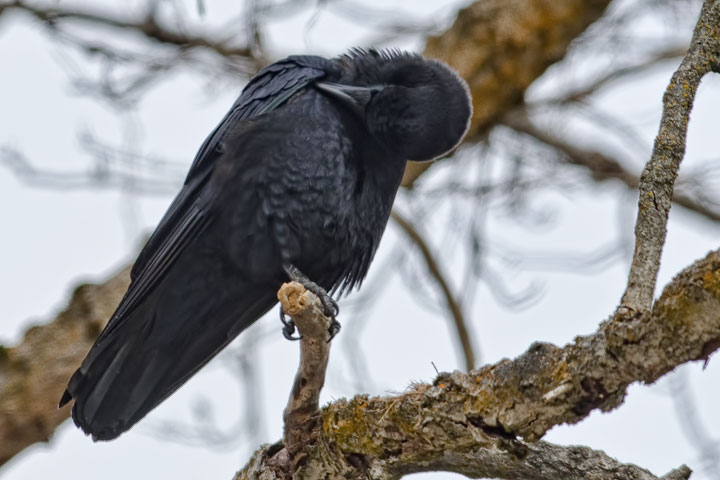
Mallards were numerous. These ones were on the ice of a small bay.
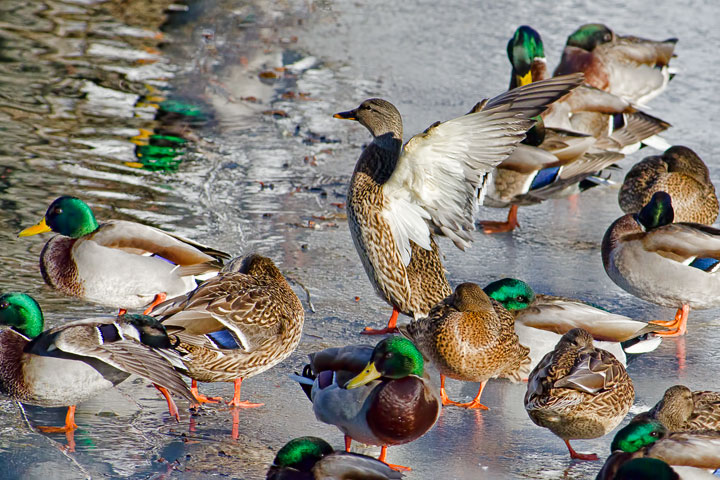
There were House Finches near someone’s feeder. Here is the female.
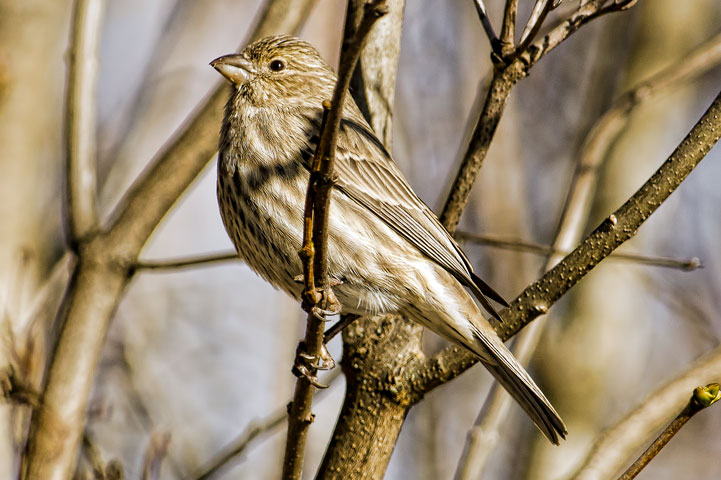
The male was caught in flight. It has lowered its legs as it approaches a landing. The House Finch has a undulating flight: it flaps its wings briskly, then folds them and coasts for a moment before flapping again. This bird was caught at the moment its wings were folded. Note the seed from the feeder in its bill.
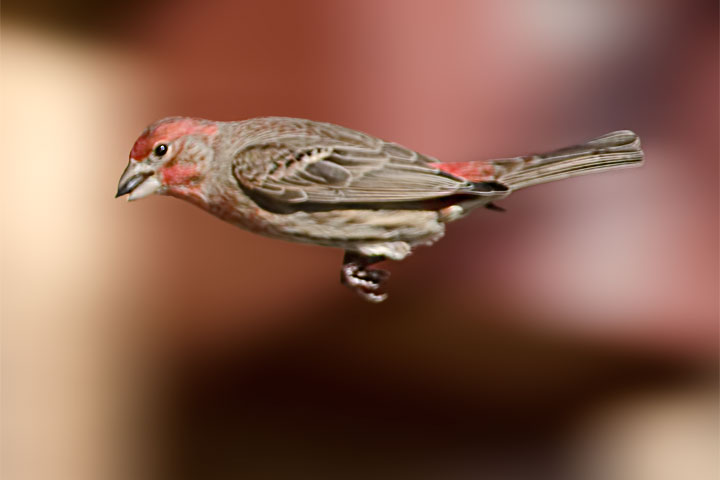
The Bufflehead Duck has iridescent feathers on its head. Normally they look black, but sometimes in the sunlight, colours can be seen. I have tried to photograph this before, but with somewhat less success.
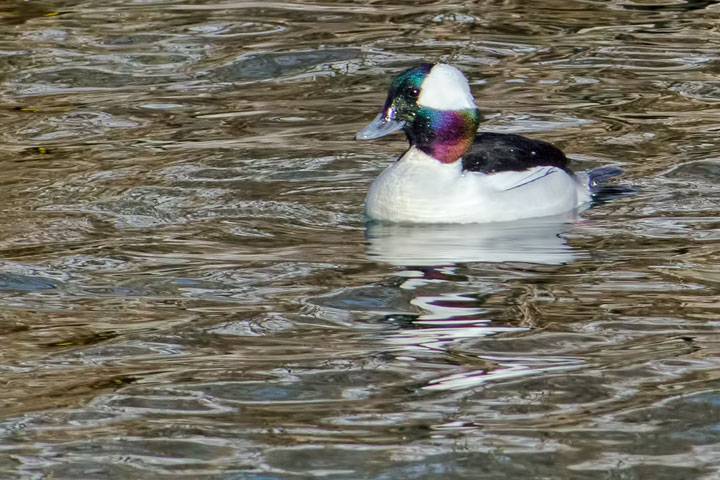
Although not as small as the Bufflehead, the Hooded Merganser is much smaller than the Mallard, as is clear when one swims past the other.
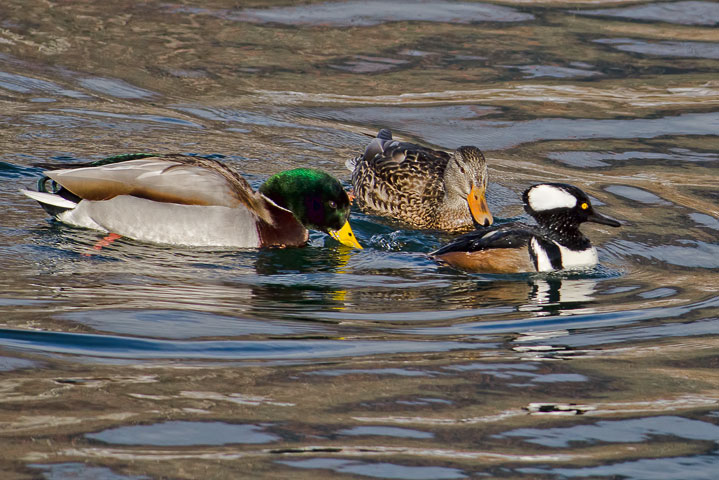
My favourite picture of the day is of the Hooded Merganser, but I like it almost as much for the look of the water as for the bird itself.
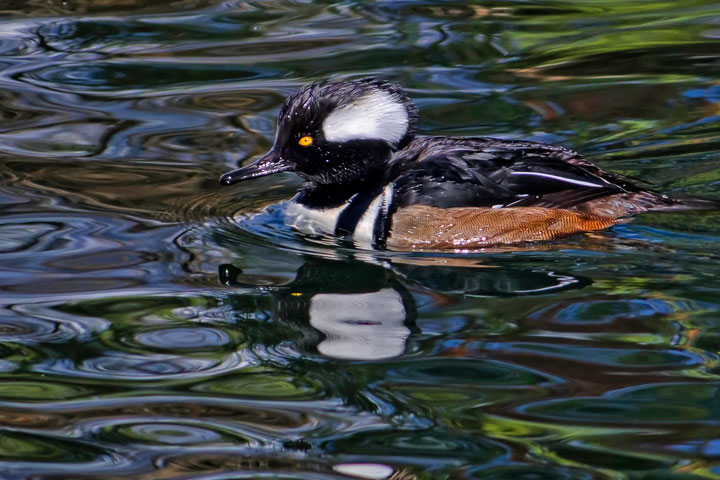

Your pictures are beautifull, as usual. That is a female crow as you can tell by her petite, slender bill.
Keep up the great work.
Carol
Carol, Yours is an interesting observation about the crow. You, after all, are the only local who is likely to have good hands-on experience with crows. Yet, I could find nothing in the literature, to support your statement. Indeed, in a 1990 paper, Sexing Adult and Yearling American Crows…, the authors found that the width of the bill gave no clue as to the bird’s sex.
Your CBC photos are a joy to study closely, each and every one.
And it is your close study of every aspect of the world of nature around you that is a gift to us. For instance, having read your text, I’ll be watching the flight patterns of the House Finches as they leave the willow tree to come to our feeders.
Yes, your favourite is indeed stunning! Those colours on the water ….
Denise, many small birds (< 300 gm) use bounding flight: alternatively flapping and coasting with wings folded. It may save them energy, it may optimize muscle performance, and it may help avoid predators—or all three. I find it fun to catch a picture of one when coasting because it just looks so odd to see a bird flying with wings folded.
Great pictures once again, Alister. Stunning Bufflehead but then you seem to have a surreal talent with birds and water 🙂
Bill, I find waterfowl much easier to spot, and so photograph, than birds in the trees. Of course, it helps that I spend a great deal of time alongside a lake. I still want to get much closer shots of the iridescent bufflehead feathers.